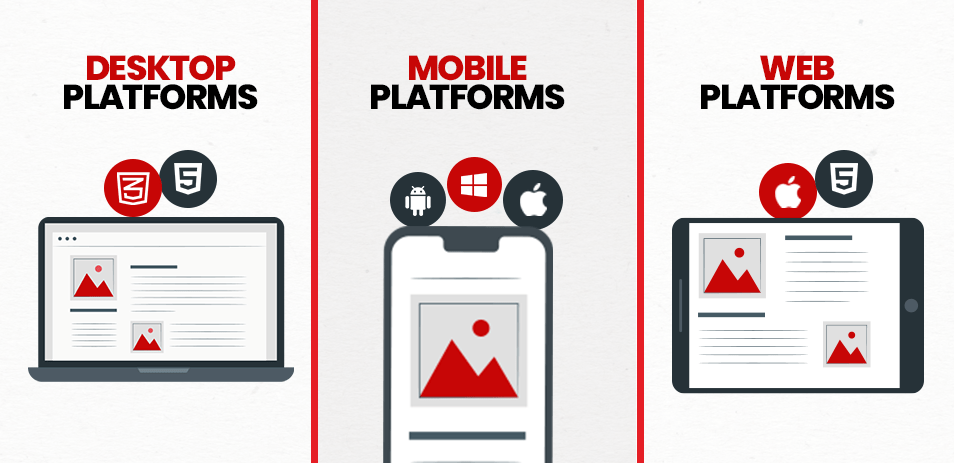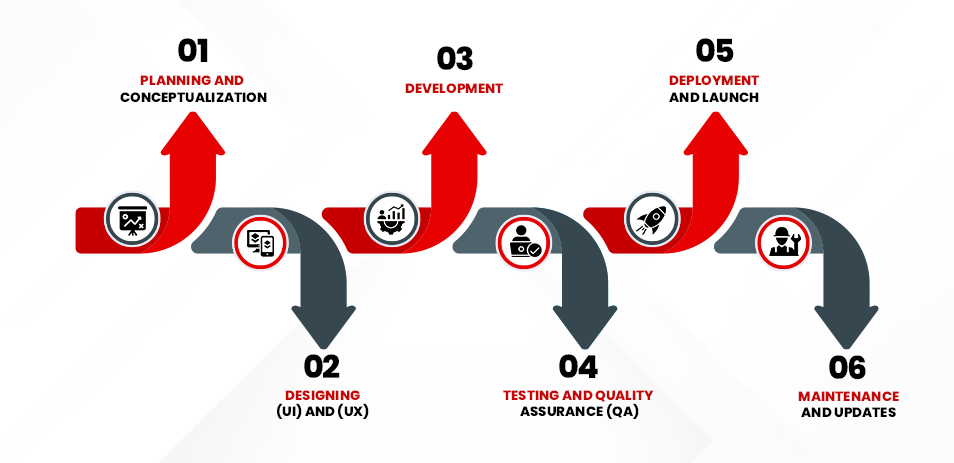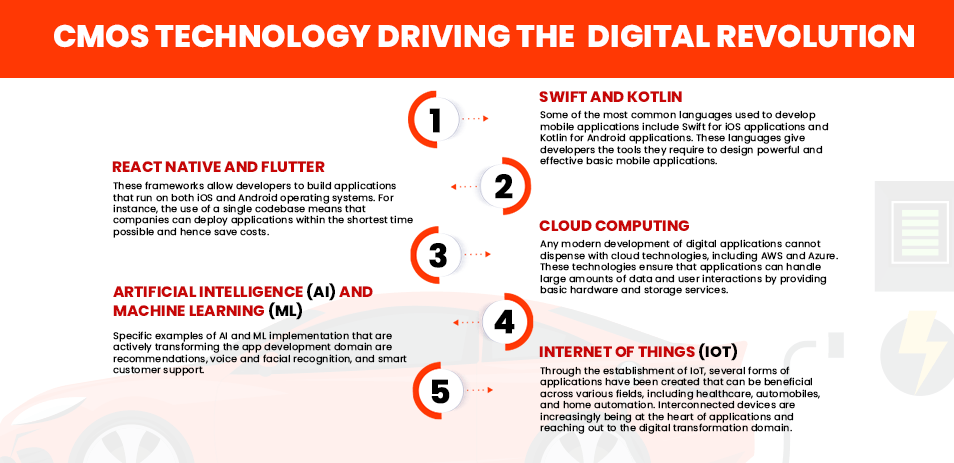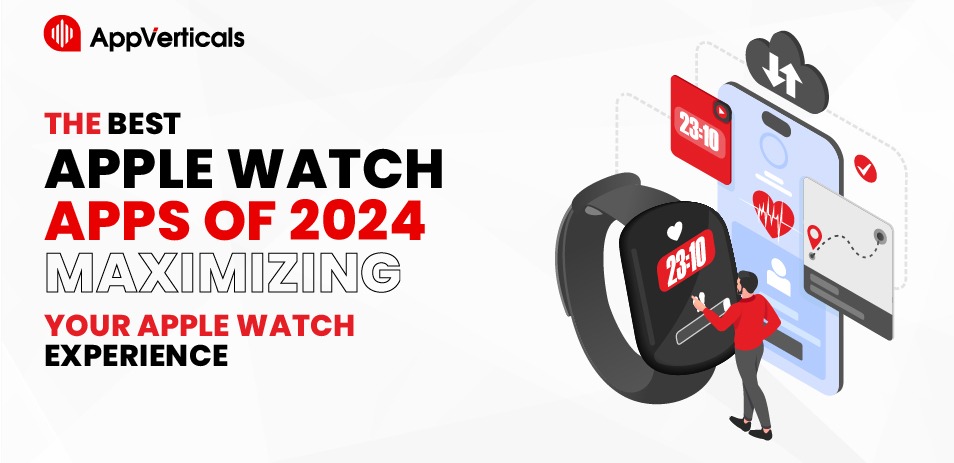The phenomenon of digital transformation is most relevant in today’s world, where time is the primary currency. Digital application development is becoming an attractive technique that firms use to improve their performances, interact with consumers, and adopt efficiency. These applications are crucial in influencing industries, most especially through mobile application development, which remains central to the promotion of this technological revolution. That is why it is extremely important to comprehend which technologies are behind various digital software applications and how they can be utilized optimally to revolutionize the existing digital reality.
This article will discuss Digital Application Services, their life cycle, the importance of Digital software, and how these innovations are imperative to the progression of Digital change.
Ready to elevate your digital applications?
Embrace a user-centered design approach and ensure scalability and security with cutting-edge mobile app development. Contact AppVerticals to start transforming your digital strategy and drive success for your business.
Yes Let’s goWhat is a Digital Application?
A digital application can, therefore, be described as an application created to work on handheld or electronic devices like those that support smart operating systems: smartphones, tablets, or even personal computers. These can also be referred to as apps. They can allow users to accomplish tasks, find solutions, and even improve their efficiency. For both private and commercial or industrial needs, present technological interaction is fundamentally anchored on digital applications.
Digital applications are also available in different classifications, including Mobile applications, Web applications, and Desktop applications. Each has its own function in improving e-services and ensuring the continuity of the connection between providers and consumers.
Types of Digital Applications: Exploring the Differences Between Web, Mobile, and Desktop Platforms

Thus, digital applications can be further divided into web applications, mobile applications, and desktop applications. Each has its specific benefits based on the intended audience and business objectives.
Web Applications
Web applications can be run through Internet browsers; there is no need for installation, and they are also cross-platform. This makes it possible for businesses to provide the same experience across devices. However, they depend on an Internet connection and do not have interaction features like native apps.
Mobile Applications
Mobile Applications are developed for smartphone and tablet devices and are, therefore, optimized more for the user interface than web applications. They can utilize the device’s built-in features, such as push notification, GPS, and camera, giving businesses direct access to their users at all times.
Desktop Applications
Desktop applications are typically more powerful. While they are loaded onto computers, they are specifically designed for larger-scale tasks like software design, gaming, and graphics design. Although not as transportable as Web or Mobile Apps, they offer more features and capabilities for more intensive tasks.
These are all types of digital applications. Are you ready to elevate your digital applications? Embrace a user-centered design approach and ensure scalability and security with cutting-edge mobile app development. Contact AppVerticals to start transforming your digital strategy and drive success for your business!
Digital Software: The Foundation of Modern Solutions
Software is the principal element of the application construction process. It consists of a set of programs, procedures, and algorithms that are planned to complete certain tasks. Applications power every digital service, from calculators to complex enterprise systems.
If one participates in the digital application development process, it is crucial to have a proper understanding of digital software and its functioning. Digital software supports computations and other backend processes as well as front-end and user interface, making the overall operation streamlined for the user.
User-Centered Design: Key to Success in Digital Applications
User-centered design (UCD) is an approach to developing applications that enhance the common user interface. The rationale is that positioning the key design choices around the perceived end-users expectations will enhance the customer experience and utility.
1. Improved Usability and Accessibility
The concept of usability improves an application by favoring the accomplishment of users’ tasks without exerting too much effort. Accessibility features are implemented to ensure that a user with a disability doesn’t have to take the time to use the application.
2. Enhanced Customer Retention
One of the most important aspects of user engagement is the presence of an easily navigable UI and a seamless UX. Well-intuitive, visually attractive app designs make customers come back for more, subsequently increasing client retention rates.
3. Increased Conversion Rates
In e-commerce or service-oriented applications, user-centered design can be a significant strategic priority since it sometimes affects conversion rates. Consequently, an efficient checkout, easily understandable structures and navigation, and proper responsiveness increase the completion ratio.
The Role of Mobile App Development in Digital Transformation
Mobile application development is a key driver of the continuous wave of digital transformation. Today, hardly any business, whether big or small, has not adopted the mobile app mechanism for a better and more efficient working model.
1. Enhancing Customer Engagement
Mobile apps provide a first-party experience for interacting with customers that more traditional avenues cannot enable. From shopping websites and mobile applications for orders and complaints to acting as a source for movies and music, mobile applications are important in keeping customers loyal and satisfied.
2. Improving Operational Efficiency
Mobile application development enhances business organizational structure and chaos since firms can control their operations. Software programs, inventory and logistics, and communication tools enable business organizations to function more dynamically, collaboratively, and effectively.
3. Driving Innovation in Product and Service Delivery
The application of digital technology encourages the creation of new products and services and, therefore, stimulates business industry innovation. From healthcare to mobile financial services, smart mobile apps are revolutionizing the way consumers are served in terms of productivity and convenience.
Mobile-First Strategy: Essential for Modern Digital Transformation
The advancement in technology means that most consumers are now online through handheld devices. This has made the mobile-first approach critical for any organization that is in the process of adopting the digital agenda. This approach involves creating and implementing digital applications in which mobile users are given priority, with a tendency to use small-screen gadgets.
1. Mobile-Driven Customer Engagement
A mobile-first approach ensures that businesses meet their customers where they spend most of their time: on their smartphones. This way, businesses can focus on mobile app development, where they can personalize users’ experiences.
2. Enhanced Mobile User Experience
A mobile-first approach to design usually yields more optimized and simplistic UIs since it anticipates mobility’s capacities and limitations. The chosen designs help make web content easily visible and manageable, thus enhancing user satisfaction and interaction.
3. Faster Load Times and Performance
Mobile-first is an approach that obliges developers to set their focus on load times and app performance since many mobile users desire rapid experiences. It leads to the creation of applications that are faster and more reliable in the devices being used.
Processing Digital Applications: From Concept to Launch

In the creation of digital applications, several steps take an idea through the different phases so that it becomes a functional product. Digital application development is a complex journey that includes.
1. Planning and Conceptualization
In this stage, the researcher gathers the problem that the application he or she is developing will solve. The most basic parameters of the application to help in its development are its description, target users, and distinctive characteristics.
2. Designing the User Interface (UI) and User Experience (UX)
It is increasingly important for any digital application to have at least a good and attractive interface. Specifically, the UI/UX design process will entail developing diagrams and models in the form of a wireframe, mockup, and prototype that define the application’s interface.
3. Development
In this stage, the developer applies application development technologies to design the app’s Front and Back End. Programming languages used include Swift for iOS and Java for Android, while frameworks have been developed like React Native and Flutter for cross-platform.
4. Testing and Quality Assurance (QA)
Testing activity is performed to control the absence of bugs and check the application’s compliance with the necessary performance indicators. Automated and manual testing is also used to ensure that the application runs well on various devices.
5. Deployment and Launch
After the application is completed, it can be directly uploaded to app stores like Google Play Store, Apple App Store, or the company server. The launch phase also encompasses marketing strategies aimed at generating consumer traffic and publicizing the company.
6. Maintenance and Updates
It also implies that constant updates and maintenance are needed where necessary to eliminate bugs, build and improve the functions, and consider users’ changing needs. This helps make new improvements with an extra-sharp edge to ensure that the application is relevant in the marketplace.
From concept to launch and transform in the digital era, Contact AppVerticals starts changing your digital strategy and driving success for your business.
Scalability and Security: Building Robust Digital Applications
When businesses expand, the applications they use online should also expand to support the additional user load and be comprehensively secure. Thus, scalability and security are key aspects that are foundational to the sustainable growth of any digital platform.
1. Scaling Infrastructure for Growing User Bases
A scalable application means that its effectiveness does not decrease when the number of users and transactions increases. This is especially true for mobile applications and web software that can experience increased traffic loads, which can burden servers and underlying systems if they are not fine-tuned to cope with that intensity.
2. Ensuring Data Security and Compliance
The more user data digital applications process, the more crucial security is. Data should be safe from hackers, so strong encryption, protective methods when signing in, and adherence to principles such as GDPR or HIPAA are crucial.
3. Cost-Effective Scalability Solutions
AWS and Azure provide critical expandability solutions without the need for a huge investment in physical hardware. These solutions ensure one can scale up in terms of storage, computing, and data management, depending on market demands.
Application Development Technologies: Powering the Digital Revolution

Numerous technologies are available worldwide for application development, including several tools and programming languages that enable developers to design the best applications in the current digital world. Some of the most prominent technologies in this space include.
1. Swift and Kotlin
Some of the most common languages used to develop mobile applications include Swift for iOS applications and Kotlin for Android applications. These languages give developers the tools they require to design powerful and effective basic mobile applications.
2. React Native and Flutter
These frameworks allow developers to build applications that run on both iOS and Android operating systems. For instance, the use of a single codebase means that companies can deploy applications within the shortest time possible and hence save costs.
3. Cloud Computing
Any modern development of digital applications cannot dispense with cloud technologies, including AWS and Azure. These technologies ensure that applications can handle large amounts of data and user interactions by providing basic hardware and storage services.
4. Artificial Intelligence (AI) and Machine Learning (ML)
Specific examples of AI and ML implementation that are actively transforming the app development domain are recommendations, voice and facial recognition, and smart customer support.
5. Internet of Things (IoT)
Through the establishment of IoT, several forms of applications have been created that can be beneficial across various fields, including healthcare, automobiles, and home automation. Interconnected devices are increasingly being at the heart of applications and reaching out to the digital transformation domain.
Digital Application Services: Empowering Businesses Globally
Digital application services pertain to the various products offered by an app development firm, which may include custom application services, application system integration, and application services support. The provision of these services is seminal to enabling businesses to cope with the challenges in the new world order.
1. Custom Application Development
This service aims to come up with culminating services that respond to the overall needs of a business entity. From an e-commerce running website to creating a mobile bank application, native applications ensure companies have tailored and scalable solutions.
2. Application Integration
Application integration maintains the continuity of new applications with the current systems so that business organizations can have a single working environment. Such services are useful to firms that desire to improve their operations but cannot afford significant downtime.
3. Application Maintenance and Support
Upgrade and maintenance services are critical to keeping digital applications and systems working and in compliance with current standards. They involve checking how the applications are performing, fixing defects, and making periodic security adjustments to the software.
Ready to elevate your digital applications?
Embrace a user-centered design approach and ensure scalability and security with cutting-edge mobile app development. Contact AppVerticals to start transforming your digital strategy and drive success for your business.
Yes Let’s goApplication Maintenance and Continuous Improvement: Ensuring Long-Term Relevance
The creation of a digital application is just the starting line. Applications need to be updated, maintained, and improved regularly to stay relevant and in the market. This ensures they remain useful, safe, and commensurate with the evolving use and advancements in technology.
1. Ongoing Bug Fixes and Performance Enhancements
Any software program cannot be developed to an optimal level at the time of installation, which is why there is a need to maintain such an application. There is a need for constant updates to fix bugs, improve efficiency, and optimize the code in order to operate efficiently on various devices and systems.
2. Adapting to User Feedback
User feedback is, therefore, crucial in supplementing the application’s improvement. When users report problems with software usage or even share ideas, developers can optimize the user interface and achieve long-term engagement.
3. Incorporating New Features and Technologies
In essence, technological changes make it mandatory to upgrade most digital applications. The addition of AI-based recommendation systems, voice search, or payments is critical to helping the app maintain its relevance in today’s constantly evolving landscape.
Conclusion: The Future of Digital Transformation and Application Development

Digital transformation’s future is reliant upon the growth of mobile applications and digital software programs. Hence, as businesses continue to grow and change, there will be an even greater need for application development services, from which industries will be fashioned and consumers will interact.
Companies must, therefore adopt these digital technologies, especially where they want to sustain themselves in the existing dynamic environment. In today’s world, smart customers and continuous technological advancements make the proper utilization of digital applications the key to improving customers’ experiences and optimizing businesses’ processes.
Fortunately, the right application development technologies and services can help transform businesses so that they don’t just exist but grow in a digital world; that is why investing in mobile apps and digital solutions is more than a priority for any progressive company.








